
It is an indisputable fact that Star Wars is, first and foremost, a film franchise. But while the movies will always be the most important part of the galaxy far, far away, it should not be forgotten that it also encompasses countless tie-in novels, comics, toys, and (the part relevant to this article) video games.
Beginning with a scrolling shooter based on The Empire Strikes Back released for the Atari 2600 in 1982, Star Wars games have been released in almost every genre you can imagine – from real-time strategy to first-person shooters to racing to ecosystem management (no, really). While the repercussions that the announcement of the sequel trilogy had for the Expanded Universe are by now well-known, we still have not yet seen the results of the video game license changing hands from LucasArts to Electronic Arts.
That there will be significant differences is inevitable: much time has passed since the golden age of Star Wars video games, with only a handful of notable titles released after (what we had assumed was) the saga’s completion in 2005. The era of the expansion pack is over, and downloadable content (DLC) is now the order of the day. Demos, too, have gone the way of the dinosaur.
Digital releases are the norm – and Steam the undisputed king among distributors. Popular new games have come, upended the status quo and redefined gamers’ expectations for entire genres, and gone. And so the question we now have to ask ourselves is this: what examples should Electronic Arts look to when developing new Star Wars games to ensure that they are as (and more) successful as their predecessors?
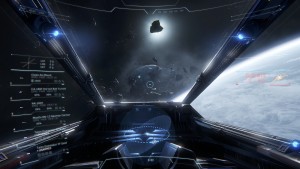
It could be argued that, more than any other genre, space simulators best reflect the spirit of the saga. Luke’s ability as a pilot is arguably more significant in the Battle of Yavin than his potential with the Force, and Han’s talents in the cockpit strongly define his character for two out of the three films in which he appears. Wedge Antilles, the only secondary character to appear throughout the entire Original Trilogy, is similarly defined by his role as a starfighter ace.
Accordingly, it’s also the most explored video game genre in the franchise, at least going by the number of titles we’ve seen released. The legendary TIE Fighter and its predecessor, X-Wing. Their crossover, X-Wing vs. TIE Fighter. The ever-memorable X-Wing Alliance. The three Rogue Squadron games. For the prequels, Starfighter and Jedi Starfighter, as well as Battle for Naboo. Even the primarily ground-based Battlefront II included mechanics for space combat.
Though the genre as a whole has been in a slump for some time, it recently made a significant resurgence with the announcement of Star Citizen, the most crowdfunded project ever (currently standing at $72 million), to be developed by Chris Roberts, the original creator of the Wing Commander series and the Digital Anvil games Starlancer and Freelancer.
The last of these is worthy of special note, and I would not hesitate to rank it among my all-time favorite video games. If I were to recommend any single game as a template for a Star Wars space simulator, it would be this one. Forty-eight distinct (and quite aesthetically pleasing, despite the 2003 release date) solar systems to explore and flexible game mechanics that permit the player to take on a variety of roles: pirate, smuggler, merchant, bounty hunter, or any combination thereof.
A lengthy and diverse list of factions populate the game’s universe, and the player maintains a reputation scale with each of them, rising in and falling out of favor depending on their actions. And so that we don’t neglect space simulators of a less open-ended nature, I should also like to see the return of branching mission trees from the original Wing Commander and the concourse intermissions from Star Wars’ own X-Wing Alliance.
That the saga deals heavily with military conflict should come as no surprise: it’s right there in the title, Star Wars. As such, we’ve also had our fair share of strategy and tactical games. Galactic Battlegrounds. Rebellion. Force Commander. Empire at War. While the last (and most recent) of these attempted to blend strategy in space with battles on land, I see more potential in keeping these two elements separate in the future. Each is undoubtedly worthy of its own game, and trying to merge them only results in neither receiving the full attention that it deserves.
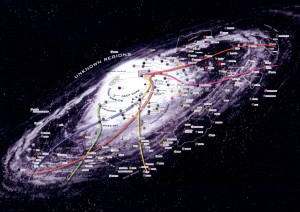
Following in the footsteps of Rebellion, you can have your 4X games on a galaxy-spanning campaign map: “eXplore, eXpand, eXploit, and eXterminate.” Military production ought to be handled on a scale that emphasizes the galactic scope of the conflict: constructing fleets and recruiting entire armies at a time, instead of individual ships and small units. Such a game should also endeavor to reflect the difference in strategic approaches to the Galactic Civil War between the Galactic Empire and the rebels.
The former might seem to have it easy, starting out with control over most of the known galaxy, but they also have the most territory to defend, and the distance between the Core and their far-flung holdings in the Outer Rim means that Imperial players will have to take great care when determining where and how to deploy their forces. The rebels, on the other hand, should be discouraged from attempting to fight pitched battles in the early game. Speed and subterfuge are their allies: better to destabilize worlds and incite sectors into open revolt with propaganda and insurgents before trying to liberate them by force.
Rebellion also memorably permitted the player to employ many prominent characters from the films and the Expanded Universe, a feature which I would hope to see make a return in any future strategy games. For added depth, one might take notes from Paradox Interactive’s Crusader Kings II or Creative Assembly’s Total War series, in which provincial governors, faction leaders, and army commanders (among many other types of minions) can gain and lose various traits over the course of the game, which in turn affect their performance in battle and their loyalty to you.
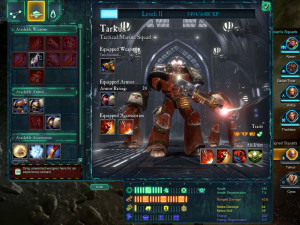
When it comes to fighting land battles, I must admit to having extremely narrow tastes. Resource gathering and construction don’t interest me. Give me a battle map and an army I didn’t hand-pick, and I’m at my happiest. Real-time tactics (RTT), instead of real-time strategy (RTS). Succeeding with the resources you’re given, even if that means the odds are against you: that’s where the real fun is. World in Conflict. Tom Clancy’s EndWar. And, most importantly, Warhammer 40,000: Dawn of War II, which I (personally) find to be the template best suited to our needs. It has, by far, the best integration of “hero units” in a strategy game I’ve ever seen, each with their own experience-based skill tree and set of equipment slots, elements one would normally associate with role-playing games, but offer an added layer of strategy and customization here.
Each hero (with a few notable exceptions) comes with a handful of troopers who share their specialty: stealth, heavy weaponry, melee combat, etc. I’m sure I don’t have to explain how perfectly that would work with a campaign starring, say, Darth Vader and the 501st Legion. Another notable feature found in the game includes the freedom to choose the order in which you perform certain sets of missions, with the risk of other missions becoming more difficult if you leave them until later, something that would help alleviate the common feeling that the player is being railroaded through the story.
Though not a concept we’ve done much with before, turn-based strategy games also hold the potential to be quite successful. One need only look at X-COM: Enemy Unknown, one of the most popular (and difficult) games in recent memory. While it may not be able to accurately model the large battles for which Star Wars is best known, its format has vast untapped potential when it comes to games based around elite rebel strike teams or Imperial commandos.
X-COM’s world map, from which players respond to crises around the world as they arise and deploy onto a wide variety of tactical maps, would seem an extremely simple (yet highly appealing) feature that we could expand with little effort into something more galactic in scale. The game also permits a high degree of customization when it comes to the troopers under the player’s command, and yet at the same time has instituted a strict system of permanent death: your beloved, highly-trained, heavily customized soldiers can easily be lost forever if you make a single wrong move or have an unlucky turn.
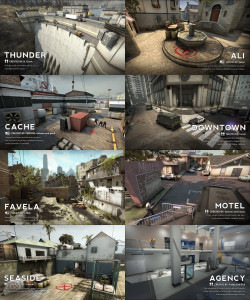
But before any of these other genres, it’s first- and third-person shooters which are of the most immediate importance to us. In our franchise, it has traditionally been the Battlefront series that met the tremendous demand for such games, and so it should come as no surprise to anyone that it was the first title to be resurrected by Electronic Arts following the transfer of the license. Battlefront is currently set to come out for Christmas 2015 to accompany the release of The Force Awakens, so it’s likely far too late for anything said here to have a meaningful impact on its development.
Still, we may hope to plant the seeds of a few interesting ideas for the all-but-inevitable sequels and any other additions to the genre that they may consider. One of the elements I’d like to place particular emphasis on is diversity – not in the sense that we usually discuss it (though that would be more than welcome), but rather in maps, playstyles, and objectives.
Counter-Strike: Global Offensive and Team Fortress 2 would seem to stand at opposing extremes: one colorful and absurd by design, and the other realist in its aesthetic and hypercompetitive. Both, however, are incredibly popular bestsellers that offer a wide variety of environments in which players can hone their talents at dealing out death to others: and the number of those maps is constantly rising thanks to thriving map development communities among fans. While many modern big-budget shooters may possess lavishly detailed maps, even the most visually stunning map eventually grows tiresome after twenty-five or fifty games. The more maps you offer your players, the greater the enduring appeal and replay value of your game.
On a related note, Republic Commando may be the only squad-based tactical shooter in Star Wars’ repertoire at the moment, but it’s a manifestation of the genre that I believe could prove quite successful if revisited. I would hold up SWAT 4 and the later Rainbox Six games as praiseworthy examples of the subgenre, and excellent templates for games based around units of Imperial stormtroopers or rebel operatives. Clone troopers are not without their own appeal, but fighting Geonosians and battle droids simply doesn’t offer the same kind of satisfaction as punching holes in shiny white stormtrooper armor or smoothly neutralizing an entire team of rebel guerrillas before they can blow up a statue of His Imperial Majesty the Emperor.
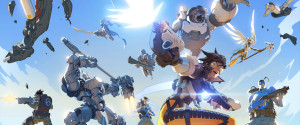
Though it has not yet been released, I’d also like to draw attention to the Blizzard Entertainment’s upcoming Team Fortress 2-esque superhero-themed multiplayer first-person shooter Overwatch: or, more specifically, part of their design philosophy, in which they have expressed a desire to emphasize teamwork and player enjoyment over the strict and unforgiving competition typical of the genre. Whether or not they succeed in realizing their ideals, it’s an approach that I would say is worthy of taking into consideration, no matter what kind of game you’re developing.
And while multiplayer is undoubtedly the primary draw for most players of this particular genre, the appeal of a lengthy single-player campaign should not go overlooked. In this aspect, one might consider Star Wars shooters as having more in common with their World War II brethren than any game set in the present: there is a major war always going on in the background and a story to be told, even if that story amounts to little more than stringing all your maps together and throwing in a narrator and some predefined objectives.
Oddly, Star Wars has never really made much of an attempt at exploring stealth games, despite the wide net that it’s cast over most other genres. The success of such games as the Splinter Cell and Metal Gear series has already proven that the demand for something other than straightforward guns-blazing firefights exists, and the comic Agent of the Empire, as well as the Imperial Agent class storyline from The Old Republic, have already amply demonstrated the viability of tales of espionage set in the Star Wars universe. Obsidian’s Alpha Protocol combines the stealth genre with elements from role-playing games, resulting in an entertaining globe-trotting spy adventure and true masterpiece of branching paths and delayed consequences.

But the game that most comfortably fits within the confines of our established universe would likely be Deus Ex: Human Revolution, which merges stealth and role-playing games with shooters and finishes it all off with a stylish cyberpunk aesthetic and a cyborg main character. Though Adam Jensen may not have asked for them, the many ways in which the player can upgrade his mechanical parts give us a glimpse of the kind of tools that might be available to an Imperial agent backed by the technical might of the Empire’s research and development divisions, or a rebel spy who enhances their own abilities with gadgets and weapons bought off the black market or stolen from Imperial laboratories and warehouses. Putting aside the question of execution, the biggest pitfall any prospective stealth game will have to avoid is linearity: stealth games are at their best when the player is offered a single objective and numerous ways to reach it.
Some of the franchise’s most critically acclaimed products have been its role-playing games: Knights of the Old Republic and its sequel. And their somewhat less warmly regarded massively multiplayer online cousin, The Old Republic. Sprawling tales that encompassed multiple worlds, their stories were based around wars between Jedi and Sith set in the distant past of the Star Wars universe, and together they formed a miniature saga of their own.
While undeniably excellent games, many years have passed since they were released, and a whole wealth of new sources of inspiration for us have come out in that time. We’ve already spoken at length on the lessons Star Wars as a whole could stand to learn from the Mass Effect trilogy, but it also has much left to offer from a gameplay perspective. You have an iconic upgradeable starship, a diverse crew of misfits to recruit, a galactic map with numerous worlds to visit and explore: these elements, and many others, are all extremely compatible with the Star Wars saga.

But setting all that aside, one of the best things about role-playing games is that they can tell almost any kind of story you can imagine. You can have the fate of the entire galaxy hanging in the balance, as Mass Effect does, or you can tell a tale of espionage, like Alpha Protocol, or you can simply drop the player in an open world and let them make their own story. Once more inspired by The Old Republic (the source of many poorly executed excellent ideas), it would be entirely possible (and even desirable) to set a game in the galactic underworld and have players take on the role of a smuggler attempting to navigate it, indebting themselves to Huttese crime lords, recruiting and managing their own crew of unsavory individuals, hiding from bounty hunters, and trying to talk (or shoot) their way past customs officials. Perhaps even introduce complex moral dilemmas in terms of what the player is and isn’t willing to transport.
Or one could truly embrace the opportunities offered by large dialogue trees, and offer players the chance to be a Jedi peacekeeper during the final century of the Old Republic, starting out as a humble padawan on the journey to knighthood: travel the galaxy with your master, fighting crime and settling disputes with your formidable skills as a negotiator. Or with your laser sword. Whichever works for you.
A sequel (or even the same game, depending on its length) might subsequently see you take on an apprentice of your own and become a true Jedi Master. Even the Empire has its fair share of viable character concepts: play as a member of the Imperial Inquisitorius, assemble your own eclectic entourage of servants, root out the last remnants of a dead order, and pursue occult artifacts on behalf of the Emperor (or even for your own benefit).
Action-adventure video games may not have as many strict conventions and mechanics that define them as other genres do, but that also permits them an unparalleled degree of flexibility. The most prominent examples to be found in Star Wars are the Dark Forces and Jedi Knight games, starring fan favorite Kyle Katarn and (eventually) his apprentice, Jaden Korr.
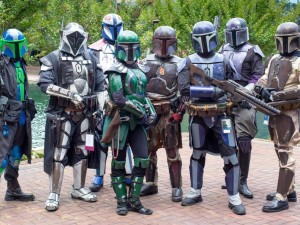
More recently, The Force Unleashed and its sequel further upped the ante with Starkiller, whose strength with the Force far outstripped anything previously seen in the franchise. But I’d like to take a few moments to talk about a less popular game that I believe greatly deserves to see its premise revisited: Bounty Hunter, in which players took on the role of Jango Fett, scouring the galaxy for scum and villainy with prices on their heads. The popularity of bounty hunters cannot be denied: one need only look at Jango’s son, Boba, or any of Vader’s other special guests on the Executor in The Empire Strikes Back.
If we were to have another such game, I’d recommend it come in the form of a series of self-contained missions (or contracts, more accurately) rather than having a single, overarching plot. Have the player start out as a rookie bounty hunter with a range of targets to pick and choose from, and make more rewarding (and difficult) contracts available to them as their infamy increases.
On the business side of things, I would point to the growing popularity of cosmetic DLC as something that could make such a game quite a financial success. Give players an original character that they can call their own and customize their armor and weapons as they wish, and you could have a real phenomenon on your hands. A standalone mission-based format would further allow for the easy integration of new DLC contracts into the game for as long as they remain profitable.

But that’s enough on that subject. Themes of survival in hostile environments against the odds are also not unfamiliar to the franchise: given Lucas’ apparent fondness for predatory megafauna, one might even see the potential for a Far Cry-esque game (or even series) that sees the player fighting for their lives on a remote, savage world. To return to the matter of toppling the Galactic Empire, one need look no further than Red Faction: Guerrilla and Just Cause 2. Both games feature lone heavily-armed protagonists tasked with all but single-handedly toppling tyrannical and despotic regimes, primarily by means of blowing up government-controlled installations and other key landmarks.
You’d barely need to make any changes at all to turn either into a story about a heroic rebel soldier fighting to liberate their world from Imperial control. Replace the guns with blasters, fighter jets with TIE Fighters, enemy soldiers with stormtroopers, and throw in a few walkers and you’d be set. In the spirit of the original trilogy, I’d recommend trying to implement a few stealth mechanics, if we do end up going down this route: disguise yourself as an Imperial stormtrooper to escape detection or infiltrate bases too heavily fortified to assault head-on. Maybe allow players to seek out and unlock new locations for secret rebel bases to use as hideouts and resupply points.

One of the more memorable features in the World War II action-adventure game The Saboteur was that regions of occupied Paris (the setting of its open world) not yet liberated from the Nazis appeared as if they were straight out of an old black and white movie, with color returning only as efforts are made to liberate the area. While that particular mechanic might not be precisely what we’re looking for, I must praise its spirit in coming up with a clear and memorable way to show the player that their actions are having an impact on their environment.
A similar effect might be achieved by making subtle adjustments to the population and landscape of a region as the player completes various tasks and eliminates signs of the Imperial occupiers – Imperial banners replaced with rebel flags, starbird graffiti appearing on walls, Imperial patrols being replaced by player-aligned citizen militias, and (if we’re feeling ambitious) NPC animations and movement patterns shifting to reflect their newfound sense of freedom.
But what I would consider the simplest and most effective tool in a developer’s arsenal would be the weather. Cover regions still under Imperial control with a perpetual grey overcast, with rain and storms as common occurrences. As the player begins to liberate the district, let the sun start breaking through. As it comes closer to being fully liberated, let the skies clear entirely.
Going forward, the one thing that I’d like to see from future Star Wars video games is a focus on substance over style. An overused phrase, I know, but hear me out. I don’t need (or want) to be able to count the hairs on Chewbacca’s hide. I don’t want a game that I can finish over the course of a weekend and feel no pull to ever revisit again. I want a game that will take full advantage of the setting to deliver the best experience possible. I want to play a Jedi with g_saberrealisticcombat 1 enabled. I want to fly through space and glory in its natural beauty while reducing enemy starfighters to their constituent atoms. I want to play a tenacious bounty hunter who always gets the job done.
I want to quash rebel movements with the full might of the Empire behind me. I want to infiltrate a fortress without anyone knowing I’m there, not because that’s the way the game is, but because I’m just that good. I don’t want to be sent on trivial fetch quests. I want NPCs to recognize my achievements and respond with appropriate awe. I want to make important decisions, and for them to have consequences that I never saw coming. I don’t want to fly circles around AT-ATs to tie up their legs again. I want to play an alien. I want a game that compels me to replay it the moment I finish. I want to conquer the galaxy. I want to liberate the galaxy. I want it all.
I don’t want a game that just lets me play in the Star Wars universe. I want a game that lets me feel like a part of it.
